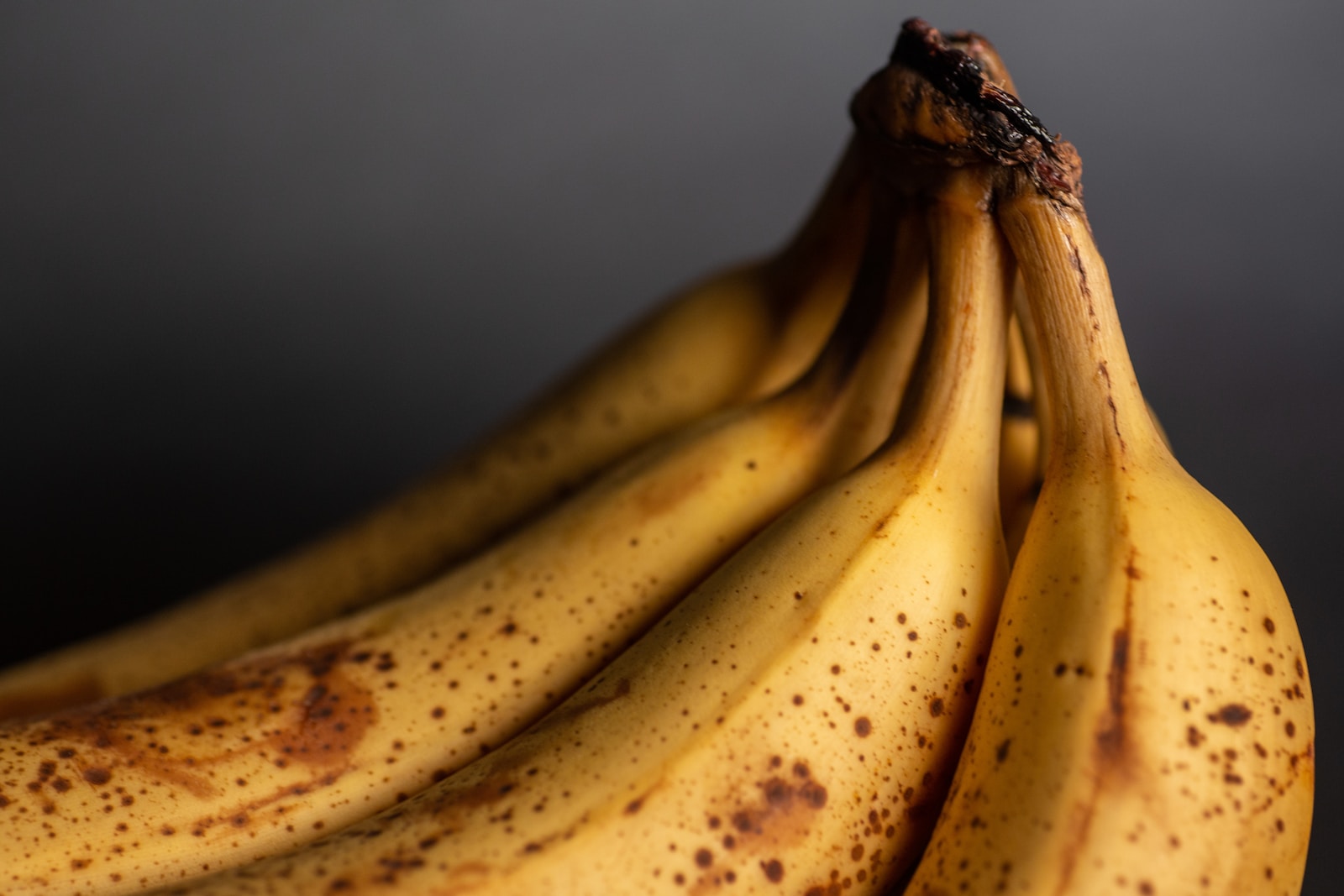Introduction
The Importance of Nutrition in Our Daily Lives
Nutrition is a fundamental aspect of our daily lives that impacts our overall health and well-being. A balanced diet comprised of essential vitamins, minerals, fiber, antioxidants and other nutrients is crucial for maintaining proper body function and preventing chronic diseases. The World Health Organization recommends a healthy diet that includes fruits, vegetables, whole grains, lean proteins, low-fat dairy products, and healthy fats to ensure optimal nutrition. Since we store most of our food in the fridge we wanted to know how refrigerator temperature impacts food nutrition and what we can do about it.
What we found is that the nutritional value of food can be affected by various factors such as cooking methods, storage techniques, and even the temperature at which it’s stored. Therefore it’s important to understand how these factors affect food nutrition, especially how refrigerator temperature impacts food nutrition, to make informed decisions about what we eat.
Brief Overview of How Refrigeration Affects Food
Refrigeration is one of the most common methods used to preserve food by slowing down bacterial growth which can cause spoilage or illness. However, in addition to preserving food safety and quality, refrigeration can also impact the nutrient content of foods stored within it.
When refrigerated at the appropriate temperature range (between 35°F and 40°F), fruits and vegetables can maintain their vitamin C content for an extended period as opposed to when kept outside the refrigerator where they are exposed to light and air which can deteriorate their nutritional value. Meat products kept under refrigeration also benefit from prolonged shelf life while maintaining their protein content.
On the other hand; if refrigerated foods aren’t stored at appropriate temperatures they can lose nutritional value due to enzymatic reactions or oxidation processes accelerated by high temperatures or moisture levels inside a refrigerator. Thus understanding how refrigerator temperature affects food nutrition plays an important role in optimizing nutritional intake from our diets over time.
The Ideal Refrigerator Temperature for Food Preservation
Refrigeration is an essential part of modern food preservation, and it has been somewhat taken for granted. However, did you know that the temperature at which you set your fridge has a massive impact on how well it preserves your food? Typically, the ideal temperature range for refrigerators is between 35°F to 40°F.
This range helps keep food fresh and safe to eat for longer periods. Setting the refrigerator below this range could cause freezing in some areas of the refrigerator and can result in spoilage of other foods due to inconsistent temperatures.
Freezing can damage fruits and vegetables, causing them to lose texture and flavor when thawed. While setting a higher temperature above this range can cause bacteria growth on fresh produce such as meats, poultry, fish, eggs or dairy items that may lead to spoilage way before their expiration date.
It’s also essential to note that refrigerators are designed differently; some models come with automatic defrost settings or frost-free technology that adjusts within this optimal range. Therefore it’s crucial to read the user manual and adjust the settings accordingly.
The Effects of Temperature on Food Spoilage and Preservation
Food preservation depends primarily on two critical factors: time and temperature. A wide variation from optimal levels can lead to rapid bacterial growth which causes food spoilage even before its expiration date leading rotting or molding of products like fruits, vegetables, dairy products meats among others.
If not stored correctly at an optimal temperature between 35°F -40°F (1.7°C-4.4°C), meat products might go sour or may get freezer burns over time due as well as perishable items like milk-based products including cheese will become rancid much quicker. On the other hand, fruits and vegetables can benefit from a slightly higher temperature, around 41°F (5°C), which helps them stay firm and fresh longer.
Maintaining the correct refrigerator temperature is essential to preserve food and avoid spoilage. A consistent optimal range of 35°F -40°F (1.7°C-4.4°C) helps prevent bacteria growth that leads to spoiling while allowing food to maintain texture and freshness for longer periods.

How Refrigerator Temperature Affects Nutrient Retention in Food
Different Types of Nutrients Found in Food
Before we dive into the effects of temperature on nutrient retention, it is important to understand what types of nutrients can be found in food. These include vitamins, minerals, enzymes, proteins, and carbohydrates. Vitamins and minerals are essential micronutrients that play a crucial role in various bodily functions.
They are commonly found in fruits, vegetables, dairy products, and meats. Enzymes are biological molecules that catalyze chemical reactions in the body.
They are present in all living organisms and play a critical role in digestion. Proteins are macronutrients that are vital for building and repairing tissues in the body.
They can be found in a variety of foods such as meat, poultry, fish, beans, nuts and seeds. carbohydrates provide energy to our bodies and can be found primarily from foods such as breads pasta vegetables .
How Temperature Affects Nutrient Retention in Food
The temperature at which food is stored significantly impacts its nutritional value. When food is exposed to higher temperatures than recommended for an extended period of time during storage or transportation there can be significant loss of nutrient content.
Vitamins and minerals tend to be highly sensitive to temperature changes; heat speeds up their degradation process while freezing slows it down but both conditions lead to significant losses over time especially if prolonged exposure occurs Enzymes also have specific optimal temperature ranges at which they function optimally; too low or too high temperatures can cause them to become inactive leading to reduced digestibility of food.
Vitamins & Minerals
As mentioned earlier Vitamins & minerals are sensitive to heat exposure therefore fruits and vegetables that have a high vitamin content should not be exposed for too long to the temperature[. For instance, vitamin C is a water-soluble vitamin commonly found in fruits such as citrus, strawberries, kiwi & broccoli. When exposed to higher temperatures for too long, it can be quickly degraded leading to significant losses in its nutritional value.
Similarly, minerals like iron and potassium are essential in our diet but can also be easily lost if heat damages the food’s structure over time. Overall, refrigeration is an important factor in preserving the nutritional value of vitamins and minerals in food.
Enzymes
Enzymes play a vital role in digestion by breaking down large molecules into smaller ones allowing our bodies to extract nutrients from food. But enzymes are sensitive biological molecules that require specific optimal temperatures for activity
Too low or too high temperatures can cause them to become inactive leading to reduced digestibility of food. Therefore it is important that raw fruits and vegetables rich with enzymes are kept at cooler temperatures than their cooked counterparts
For instance, papaya contains papain which is essential for protein digestion while pineapple has bromelain; both these fruits should be refrigerated as soon as they have ripened so that enzyme activity stays intact. storing raw fruits and vegetables at cooler refrigerator temperatures leads to preservation of enzymatic activity which supports efficient digestion & absorption of nutrients by the body.
Proteins
Proteins are essential macronutrients required for building muscle tissue and repairing damaged cells.. They denature when they face extreme temperature changes (heat or cold) causing them to lose their functional properties and could lead to reduced nutrient utilization by our body As proteins have complex molecular structures they tend not lose much nutritional quality during short refrigerating periods but it’s best if cooked proteins are consumed within three or four days after cooking. It’s important then too keep fresh meats tightly wrapped up in plastic wrap before storing them at refrigerator temperatures between 34 and 40°F to reduce the potential for bacteria growth or oxidation which could lead to nutrient losses.
Impact on Specific Foods
Meat and Poultry
Meat and poultry are excellent sources of protein, vitamins, and minerals. However, improper storage can lead to nutrient loss as well as spoilage.
Meat should be stored at temperatures below 40°F to prevent the growth of harmful bacteria. The ideal temperature range for storing meat is between 32°F and 36°F.
When meat is stored at higher temperatures, it can lose its nutritional value due to the breakdown of vitamins such as thiamin and riboflavin. Additionally, high temperatures can lead to the growth of bacteria that cause foodborne illnesses such as E.coli and Salmonella.
Furthermore, exposure to air can cause oxidation which may result in flavor changes or rancidity. Poultry is also susceptible to nutrient loss when exposed to high temperatures during storage.
The impact on texture should also be taken into consideration when storing poultry in a refrigerator. If stored properly within the ideal temperature range, poultry maintains its freshness and nutritional content while preserving its natural texture.
Fruits and Vegetables
Fruits and vegetables are an essential part of a healthy diet but their nutritional value decreases over time if not stored correctly. Fruits like apples, bananas are sensitive to low temperatures; hence they should not be refrigerated while others like berries perform best when kept cool within 35 – 40°F.
Storage temperature plays a critical role in determining the flavor quality of fruits too. For example, tomatoes need refrigeration below 55°F once they reach full maturity or else they will lose their vitamin C content rapidly leading to rapid ripening before consumption affecting their quality in taste.
Vegetables react differently depending on how they are prepared. Leafy greens should be kept dry since moisture promotes rotting, while root vegetables need moist storage to prevent dehydration.
High heat accelerates the degradation process of vegetables, resulting in the loss of vital nutrients like vitamin C and carotenoids. To store fruits and vegetables correctly, it is crucial to understand their unique needs as well as ideal storage temperatures.
Practical Tips for Maintaining Optimal Refrigerator Temperature for Nutrient Retention
Tips to Ensure That Your Refrigerator is at the Optimal Temperature Range
Maintaining the optimal refrigerator temperature is essential to ensure that your food retains its nutritional value. You can check out our complete guide here or here are some tips to help you keep your refrigerator at the right temperature:
1. Use a thermometer: Purchase a thermometer and place it in the fridge to monitor its temperature. The ideal temperature range for refrigerators is between 35°F – 40°F (1.7°C-4.4°C).
2. Don’t overload your fridge: Overstuffing your fridge can cause uneven cooling and prevent air circulation, leading to spoilage and loss of nutrients in foods. 3. Check seals regularly: Make sure that the door seals are tight by performing regular checks on them.
Best Practices to Preserve Nutrients
In addition to maintaining an optimal temperature range, here are some best practices that can help preserve nutrients in food:
1. Eat fresh produce as soon as possible: Fresh fruits and vegetables start losing nutrients as soon as they are harvested or picked from their parent plants; therefore, it’s always best to consume them as early as possible.
2. Store food in airtight containers: Exposure to air causes oxidation and nutrient loss, so it’s essential to store perishable items such as fruits, vegetables, meats, etc., in airtight containers or sealed plastic bags.
3. Cook with low heat settings: High heat levels during cooking destroy many valuable vitamins; hence it’s recommended to cook food using low-heat settings.

Conclusion – How Refrigerator Temperature Impacts Food Nutrition
After learning how refrigerator Temperature impacts food nutrition we can confidently say maintaining an optimal refrigerator temperature is essential for preserving the nutritional value of our foods since improper storage can lead to nutrient loss or spoilage due to bacterial growth or increased oxidation levels. By following the practical tips provided above, we can ensure that our refrigerators remain in the optimal temperature range, and we can preserve the nutrients in our food. By taking care of the nutritional value of our meals, we can enjoy a healthier lifestyle!



2 thoughts on “How Refrigerator Temperature Impacts Food Nutrition”